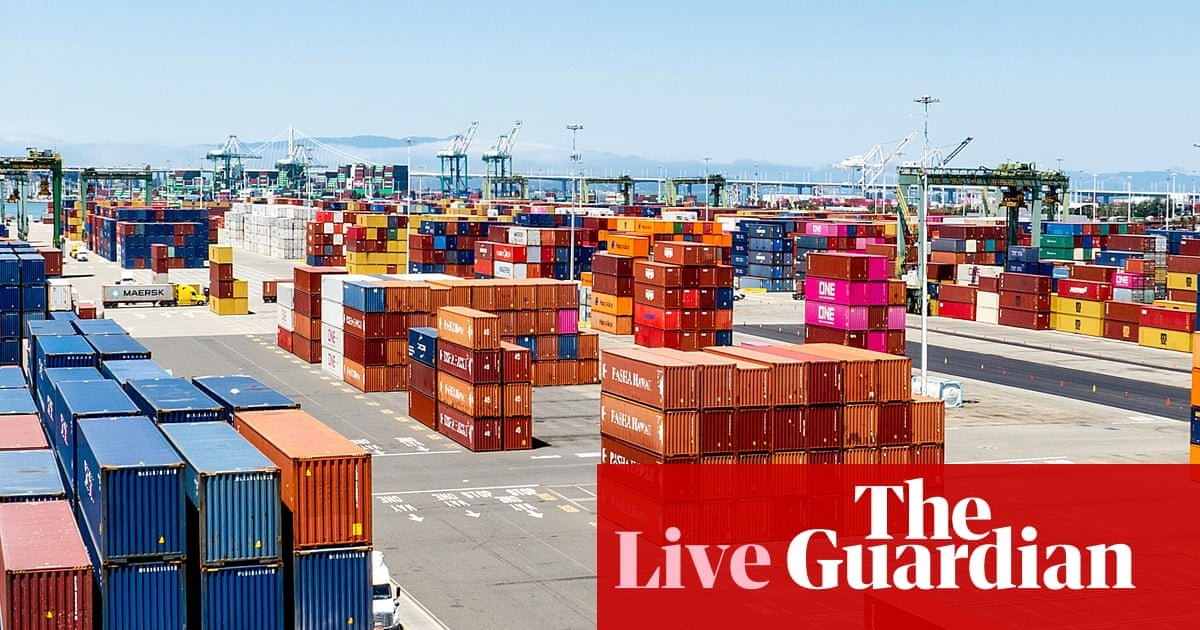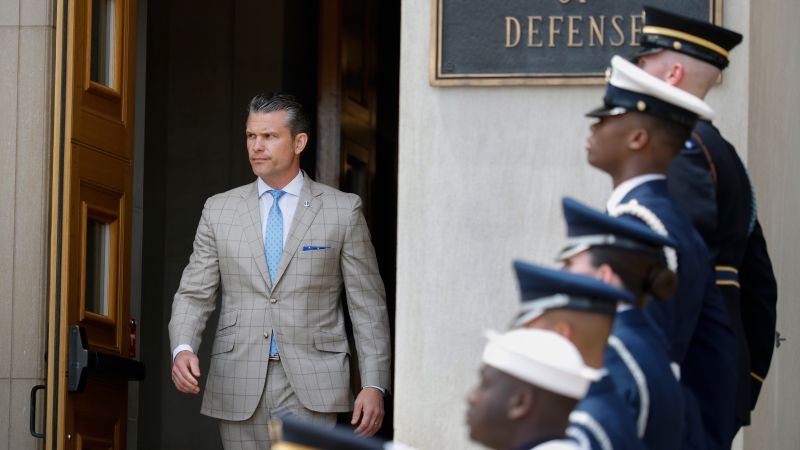Donald Trump executive order says goods imported from all countries globally will have 10% tariff except for goods from 92 nations subject to higher levies
Trump imposes tariffs of 10% to 41% on dozens of countries, hours before deadline
Trump signs order increasing tariffs on Canadian goods from 25% to 35%
Full list of new tariff rates
Across the Tasman Sea, New Zealand was hit with 15% tariffs.
The country’s trade minister Todd McClay said he was hoping to have talks with his US counterparts.
“The first step will be to talk to them directly. And we’ve engaged in a lot. In fact, it’s been very good engagement,” he told Radio New Zealand.
We will be making the case about why this shouldn’t have happened, and engaging very, very quickly again with US officials to clarify this and to seek changes around the new tariffs put on New Zealand exporters.
Local news outlet Stuff.com reported that the opposition Labour party’s trade spokesperson, Damien O’Connor, said the new tariff rate was a “slap in the face” for exporters and could lead to higher costs at home.
There was good news for Australia in the announcements from Trump – in that it was not mentioned at all.
Guardian Australia understands the US government confirmed to the Australian embassy in Washington DC that the baseline 10% tariff rate would remain in place.
“The White House has confirmed that no country has reciprocal tariffs lower than Australia,” a spokesperson for Australia’s minister for trade, Don Farrell, said on Friday morning.
Get the view from Australia here:
Amy Hawkins, our senior China correspondent, has been reporting on the impact of Trump’s trade war on China’s fast-fashion capital Guangzhou. There, she found millions of workers toiling day and night in informal workshops to produce cheap garments for export. Business was slow, she reports:
In Panyu, Yang Ruiping has run his small clothes factory, which specialises in tops and employs about 20 people, for two decades. About 30% of his orders are exported, mostly to Shein and Amazon, down from more than 50% before the pandemic. Although the pause in the trade war has eased the pressure on his business slightly, he still has “little confidence in the US”.
“In the recent US-China trade war, if the tariffs go up, we need to lower the production costs to combat it,” he says. “It leaves little room for profit”. With no room to cut wages any lower, Yang says he is already losing money on every top he sells. He keeps accepting the orders in order to keep the factory open, but with the domestic market becoming increasingly competitive, he is aware he might not be able to operate much longer.
Read the full story here:
More on Cambodia now – deputy prime minister Sun Chanthol has thanked Donald Trump for his understanding in Cambodia’s negotiations to reduce a tariff rate to 19% after initially being set at 49% then later 36% – among the world’s highest levies, Reuters reporting.
The news agency quoted Chanthol – Cambodia’s top trade negotiator – as saying in an interview: “If the US maintained 49% or 36%, that industry would collapse in my opinion,” referring to the garment and footwear manufacturing sector, the biggest economic driver in the country of 17.6 million people.
People would go to Indonesia, Vietnam … a 16% difference would have been huge. We can live with 5%, anything around that. We are very grateful, for protecting our industry and its employees.
We have close to 1 million workers, mainly women, each one of those workers supporting four-five members of their family. It would have been a huge impact if this would have been bad.
Cambodia has a big trade surplus with the US, with its exports to the American market accounting for 37.9% of its total shipments in 2024, valued at close to $10bn, according to official data.
The Indian rupee was expected to open slightly weaker on Friday amid worries over the impact of the steep US tariffs on Indian exports and persistent portfolio outflows.
Reuters reports the one-month non-deliverable forward indicated the rupee would open in the 87.65-87.70 range versus the US dollar, compared with 87.5950 in the previous session.
The rupee declined about 2% in July, with Donald Trump’s threat of a 25% levy on Indian goods – alongside an unspecified penalty – pushing it closer to its all-time low of 87.95.
Economists estimate the 25% tariff announced could shave off India’s 2025-26 growth by up to 40 basis points, but analysts and investors also believe India may be able to achieve a lower rate via negotiations.
Cambodia’s deputy prime minster has said the new 19% tariff rate protects its garment manufacturing industry with its 1 million workers and allows the country to be competitive with its peers.
Reuters quotes Sun Chanthol as saying the US’s previous tariff rate – set up to 49% – would have caused the industry to collapse.
Shares in Asia fell on Friday after the US hit dozens of trading partners with high tariffs.
MSCI’s broadest index of Asia-Pacific shares outside Japan fell 0.7%, bringing the total loss this week to 1.8%. South Korea’s KOSPI plunged 3% while Taiwanese shares fell 0.9%, Reuters reports.
Japan’s Nikkei dropped 0.4%. Chinese blue chips were flat and Hong Kong’s Hang Seng index eked out a small gain of 0.2%.
“At this point, the reaction in markets has been modest, and I think part of the reason for that is the recent trade deals with the EU, Japan, and South Korea have certainly helped to cushion the impact,” said Tony Sycamore, an analyst at IG.
The market now, I think, has probably taken the view that these trade tariff levels can be renegotiated, can be walked lower over the course of time.
Here is a searchable list of the latest reciprocal tariffs announced by the White House:
Donald Trump has said his new steep tariffs are going “very well, very smooth” – but that he’s open to more deals.
The US president also told NBC News he was open to further discussions with Canada, adding that he may even speak with Canadian prime minister Mark Carney later in the night, Reuters reports.
Trump signed an executive on Thursday order raising tariffs on Canadian goods to 35% from 25% on all products not covered by the US-Mexico-Canada trade agreement.
Welcome to our live coverage of Donald Trump’s sweeping tariff regime.
The US president signed an executive order on Thursday imposing reciprocal tariffs from 10% to 41% on US imports from dozens of countries and foreign locations. Rates were set at 25% for India, 20% for Taiwan and 30% for South Africa ahead of Trump’s self-imposed deadline of 1 August for striking trade deals with countries worldwide.
He extended the deadline for a tariff agreement with Mexico by another 90 days.
Brazil’s tariff rate was set at 10%, but a previous order signed by Trump placed a 40% tariff on some Brazilian goods, to punish the country for prosecuting its former president Jair Bolsonaro over an alleged coup attempt after the 2022 election.
In other key news:
Canadian imports will face tariffs of 35%, not the current 25%, the White House announced. Trump had threatened on Wednesday that Ottawa’s move to recognise a Palestinian state would make agreeing a trade deal “very hard”.
Some of the world’s poorest and most war-torn countries were hit with punitive rates, including Syria, which faces a levy of 41%; Laos and Myanmar with rates of 40%; Libya with a rate of 30%; Iraq with 35% and Sri Lanka with 20%. Switzerland faces a rate of 39%. The rates are set to go into effect in seven days, according to the order.
Thailand’s finance minister said on Friday that a 19% tariff rate had been agreed – significantly lower than the 36% level announced in April and better aligned with other countries in the region. Vietnam and Indonesia reportedly negotiated tariffs of 20% and 19% respectively.
China faces a separate deadline for its higher tariffs of 12 August, with an extension to the truce agreed in principle but yet to be approved by the White House.
By 31 July just eight countries or economic blocs had reached formal agreements with the White House: the UK, Vietnam, Indonesia, Philippines, South Korea, Japan, Pakistan and the EU.
– With Helen Livingstone, Lisa O’Carroll and agencies
Trump tariffs live: new rates on 92 countries released; Canada faces 35% levy on Friday – The Guardian



